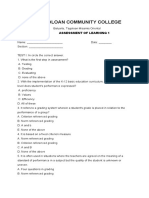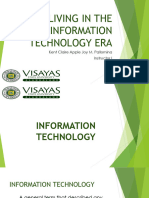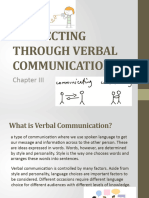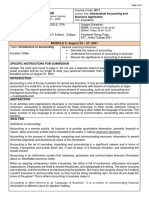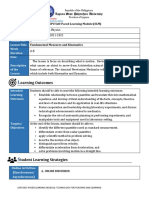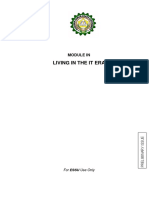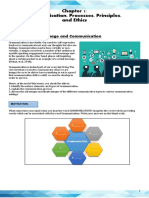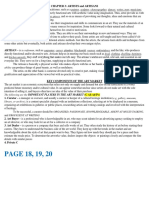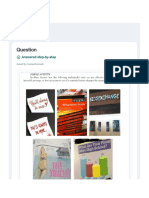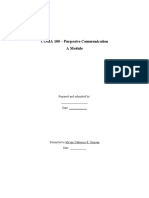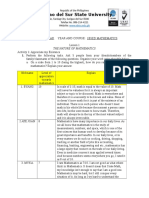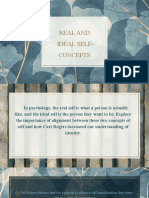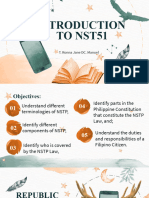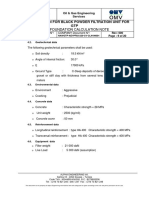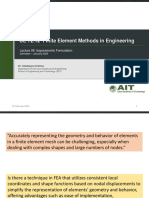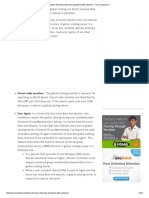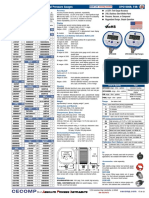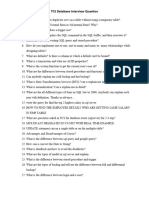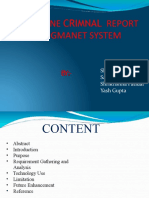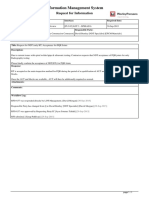Information Technology
Information Technology
� Technology for Teaching and
i-Link College of Science and Technology, Inc. Learning 1
VISION
i-Link College of Science and Technology envisions to be a leading educational
institution that excels in academic and technical competence in producing
globally innovative and holistically-developed outcomes that respects cultural diversity.
Mission
i-Link CST commits to:
Promote quality education through collaborative interaction, research-based instruction,
community immersion, extension in pursuit of excellence.
Develop graduates who are well-disciplined, gender-sensitive, service-oriented, socially-
receptive and productive members of the society.
Goals
1. Intensify the commitment in serving the learners and stakeholders;
2. Strengthen the linkages with partner agencies;
3. Apply for additional program offerings relevant to the needs of the community;
4. Engage faculty and personnel to relevant research and extension work and
professional development; and
5. Motivate and support students to excel in all local and national competition
and assessment.
Core Values
i - Link College of Science and Technology as an institution believes in;
innovativeness
Loyalty
Integrity
Nationalism
Keenness
i
� Technology for Teaching and
i-Link College of Science and Technology, Inc. Learning 1
MODULE 1
Introduction to Information Technology
Module Overview
Upon completion of this module, the student should have detailed knowledge and
understanding of information technology. A critical appreciation of the role of IT deployed in the
business. Confidence in their ability to use essential business software. The ability to develop
effective business presentations. Knowledge of the resources of the Internet.
1
� Technology for Teaching and
i-Link College of Science and Technology, Inc. Learning 1
Lesson 1
Information Technology
Specific Objectives
At the end of the lesson, the students are able to:
Discuss the concept information technology; and
Apply understanding on the five parts of information technology through video blog
2
� Technology for Teaching and
i-Link College of Science and Technology, Inc. Learning 1
Engage 1.1 Image Presentation about Information Technology)
Observe the image above, and list down all the words you noticed in the image.
Explore 1.1(One-Minute Formative Assessment)
In your understanding what is information technology? Write your answer in the space provided
below.
3
� Technology for Teaching and
i-Link College of Science and Technology, Inc. Learning 1
Explain 1.1
➢ INFORMATION TECHNOLOGY
Information technology (IT) is the use of any computers,
storage, networking, and other physical devices,
infrastructure, and processes to create, process, store,
secure, and exchange all forms of electronic data. Typically,
IT is used in the context of enterprise operations as
opposed to personal or entertainment technologies. The commercial use of IT encompasses
both computer technology and telephony. The term information technology was coined by the
Harvard Business Review, to make a distinction between purpose-built machines designed to
4
� Technology for Teaching and
i-Link College of Science and Technology, Inc. Learning 1
perform a limited scope of functions and general-purpose computing machines that could be
programmed for various tasks.
CONCEPT OF INFORMATION TECHNOLOGY
Information is a resource that has no value until it is extracted, processed, and utilized.
Information technology deals with information systems, data storage, access, retrieval, analysis,
and intelligent decision-making. Information technology refers to the creation, gathering,
processing, storage, presentation, and dissemination of information and also the processes and
devices that enable all this to be done. Information technology is affecting us as individuals and
as a society. Information technology stands firmly on the hardware and software of a computer
and telecommunications infrastructure
INFORMATION SYSTEM
When you think of a microcomputer; perhaps you think of just the equipment itself. That
is, you think of the monitor or the keyboard. Yet, there is more to it than that. The way to think
about a microcomputer is as part of an information system. An information system has five
parts; people, procedures, software, hardware, and data.
People: It is easy to overlook people as one of the
five parts of an information system. Yet this is what
microcomputers are all about—making people end
users like you, more productive
5
� Technology for Teaching and
i-Link College of Science and Technology, Inc. Learning 1
Procedure: The rules or guidelines for people to follow
when using software, hardware, and data are
procedures. These procedures are typically documented
in manuals written by computer specialists. Software
and hardware manufacturers provide manuals for their
products.
Software: A program consists of step-by-step
instructions that tell the computer how to do its work.
Software is another name for a program or program. The
purpose of the software is to convert data (Unprocessed
facts) into information (process facts). For example, a
payroll program would instruct the computer to take the
number of hours you worked in a week(data) and multiply it by your pay rate (data) to determine
how much you are paid for the week (information)
Hardware: The equipment that processes the
data to create information is called hardware.
It includes the keyboard, mouse, monitor,
system unit, and other devices. Hardware is
controlled by software.
6
� Technology for Teaching and
i-Link College of Science and Technology, Inc. Learning 1
Data: The raw, unprocessed facts, including text,
numbers, images, and sound, are called data. Process
data yields information. Using the previous example of
a payroll program, the data (number of hours worked
and pay rate) is processed (multiplied) to yield
information (weekly pay
People are surely the mosey important part of any information system. Our lives are
touched every day by computers and information systems. Many times, the contact is
direct and obvious, such as when creating documents using a word processing program
or when we connect to the Internet. Other times, the contact is not as obvious.
Throughout this module, you find a variety of features designed to help you become a
computer component and knowledgeable. These features include Making IT Work for You,
Environment, Explorations, Ethics, Tips, Careers in IT, and the Computing Essentials Web site.
Making IT Work for You: In these chapters that follow, you will find making IT work for
You features that present numerous interesting and practical IT applications. Using a step-by-
step procedure, you are provided with specific instructions on how to use each application. For
just a few of the Making, IT Work for your topics, see Figures 1-3. For a complete list.
Explorations: The information content of the Web is limitless; the challenge is to locate
the information you are looking for. In this chapter and the ones that follow, you will find
Explorations boxes in the margin that direct you to relevant Web information locations.
7
� Technology for Teaching and
i-Link College of Science and Technology, Inc. Learning 1
Environment: Today it is more important than ever that we be aware of our impact on
the environment. In this chapter and the following ones, you will find Environment boxes in the
margin that present important relevant environmental information.
Ethics: Most people agree that we should behave ethically. That is, we should follow a
system of moral principles that direct our everyday lives. However, in any given circumstance,
people often do not agree on the ethics of the situation. Throughout this module, you will find
numerous Ethics boxes posting a variety of different ethical/unethical situations for your
consideration.
Tips: We all can benefit from a few tips or suggestions. Throughout this module, you
will find numerous tips to make your computing safer, more efficient, and more effective. These
tips range from the basics of keeping your computer system running smoothly to how to protect
your privacy while surfing the web.
8
� Technology for Teaching and
i-Link College of Science and Technology, Inc. Learning 1
Elaborate 1.1(Make a Chart)
Make a chart of the five parts of the information system.
Make your output presentable
Rubrics 5 3 2
Content The information is The information is The information is
relevant to the topic slightly relevant to not relevant to the
the topic topic
Creativity/Neatness The output was The output was The output was not
neat and creative slightly neat and neat and creative
creative
Timeliness Output was done on Output was done Output was done
time beyond the late
timeframe
Total: 15 points
Evaluate 1.1
Create a reflection paper on your understanding of the five parts of the information system.
Rubrics 5 3 2
Content The information is The information is The information is not
relevant to the topic slightly relevant to the relevant to the topic
topic
Cleanliness The output was neat The output was The output was not
and clean slightly neat and clean neat and clean
Timeliness Output was done on Output was done Output was done late
9
� Technology for Teaching and
i-Link College of Science and Technology, Inc. Learning 1
time beyond the timeframe
Total: 15 points
10


